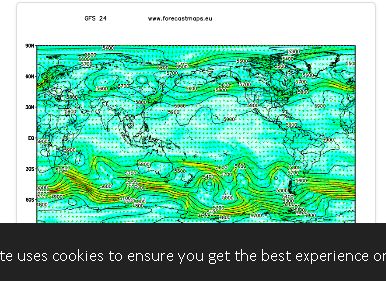How can Global Weather Programmes predict the long run? Weather forecasts really are a big section of our way of life and, whether were investigating a global weather map, a weather map of Europe, or we merely want to see a nearby weather map for the next couple of days, what you are seeing ‘s all based on data taken from huge mathematical models known as numerical weather prediction (NWP) models. The 1st NWP models were pioneered with the English mathematician Lewis Fry Richardson, who produced, by hand, six hour weather forecasts for predicting that condition of the setting over just two points in Europe. Even this standard type of NWP was complex and it took him about six weeks to make each, very sketchy and unreliable, Europe weather map. It wasn’t prior to the coming of the pc how the huge computations forced to forecast the next thunderstorm could even be completed from the time period from the forecast itself.

The 1st practical models for weather prediction didn’t enter into being before the 1950s, and it wasn’t prior to the 1970s that computers began to become powerful enough to even start to correlate the large amounts of data variables which are employed in an accurate forecast map. Today, to make the global weather maps such as those produced by The worldwide Forecast System (GFS), the industry global weather prediction system managed by the United States National Weather Service (NWS), some of the largest supercomputers in the world are used to process the huge mathematical calculations. Every major country now has a unique weather agency who makes the weather maps for Europe, weather, maps for Africa and weather maps for the whole world. Two of the other sources used for weather prediction that you’re going to often see are weather maps CMC, that happen to be those made by the Canadian Meteorological Centre and weather maps NAVGEM, which are created by US Navy Global Environmental Model. So, just how do they will really predict the international weather? As you may expect, predicting the weather just isn’t always easy. A
weather maps worldwide relies upon historical data on the certain climate conditions triggered during the past and also on known cyclical variations in weather patterns. Data around the current weather conditions is then collected from all of all over the world, that could be millions of readings from weather stations, balloons and satellites, and they are fed in the mathematical model to predict what the likely future climatic conditions will be. To provide you with and idea of how complex the production of weather maps is, the slightest change in conditions in a place in the world may have a direct effect for the weather elsewhere, called the butterfly effect. Here is the theory that suggested how the flapping in the wings of your butterfly could influence the trail a hurricane would take. Then, you also have the problem of interpretation. Some meteorologists might interpret certain conditions differently using their company meteorologists which is a primary reason why various weather agencies around the globe collaborate on his or her weather forecasts to make ensemble forecasts, which, basically, make use of a few different forecasts to calculate essentially the most likely outcome. Whilst weather forecast maps have become far more reliable over time, particularly the short term forecasts, the unpredictability of weather systems as well as the vast number of variables involved, implies that, the longer-term the forecast is, the less accurate it is. In other words, the very next time you get trapped while it is raining; don’t blame the weather map, think about that butterfly instead.
More details about gfs weather explore our new resource:
read more

